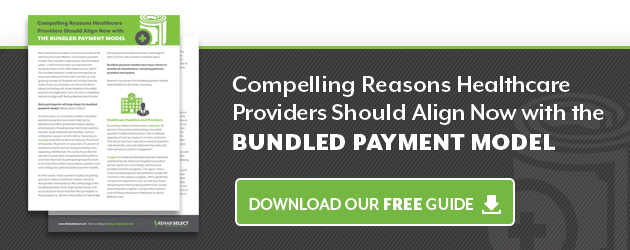 The bundled payment model is becoming ever more popular in healthcare, with a growing number of government payers – Medicare, for instance – larger healthcare systems, employers, insurers, and other payers rolling out these plans as an alternative to the traditional fee-for-service model. This trend towards a value-based payment model has become even more pronounced over the past few years with the implementation of the Affordable Healthcare Act. Much of the discussion about the merits of bundled payments has centered upon the benefits they can yield for healthcare providers and payers, but these plans offer significant benefits to healthcare consumers as well. So just how do bundled payments help patients?
The bundled payment model is becoming ever more popular in healthcare, with a growing number of government payers – Medicare, for instance – larger healthcare systems, employers, insurers, and other payers rolling out these plans as an alternative to the traditional fee-for-service model. This trend towards a value-based payment model has become even more pronounced over the past few years with the implementation of the Affordable Healthcare Act. Much of the discussion about the merits of bundled payments has centered upon the benefits they can yield for healthcare providers and payers, but these plans offer significant benefits to healthcare consumers as well. So just how do bundled payments help patients?
By Creating Incentives for Improved Quality of Care
The bundled payment model typically rewards healthcare providers for cutting or containing the costs of episodes of care. However, those financial rewards generally also depend heavily on the ability of those providers to meet certain quality of care and patient satisfaction standards. This creates a system that – unlike the traditional fee-for-service model – places a greater priority on the quality of care provided to patients rather than the quantity of care. For instance, many bundled payment plans offer financial incentives for quality improvements like reductions in rates of complications and/or avoidable rehospitalizations, which helps to build a better care process and improve patient outcomes.
By Enhancing Coordination, Communication, and Cooperation Across the Continuum of Care
Bundled payment arrangements generally offer compensation for an episode of care in the form of a single, agreed-upon lump sum. That payment is then divided among the healthcare providers involved in that care, which often include acute care hospitals, post-acute care providers, physicians, surgeons, and specialists, among others. In order to contain the costs of care and meet quality benchmarks, these providers must work together closely, using a collaborative, well-coordinated approach to overall patient care. This approach benefits patients in many ways, including more efficient medical monitoring throughout the episode of care and increased attention to follow-up care – factors that reduce the risk of complications, decrease the chances of rehospitalizations, and improve patient outcomes.
By Increasing Care Efficiency and Reducing Costs
The focus on care coordination and the overall costs during each episode of care that is built into the bundled payment model creates powerful incentives for providers to streamline the care process. This leads to the elimination of inefficiencies in that process, such as duplication of medical tests and/or redundant treatments, for instance. This can mean less stress, hassle and wasted time for patients as they move through the care process, as well as significant savings on total out-of-pocket expenses.
These are just a few of the more important ways that the bundled care model can help patients. Other benefits for patients of the trend towards this value-based payment model may include shorter stays in acute and/or sub-acute care, better communication with health care providers, and the opportunity to be better informed about their health conditions and the care process. The bottom line is that a well formulated bundled care arrangement can offer advantages to everyone involved in an episode of care – including hospitals, health care practices, sub-acute care providers, and patients – reducing healthcare costs, increasing quality of care, and improving the patient experience from start to finish.





